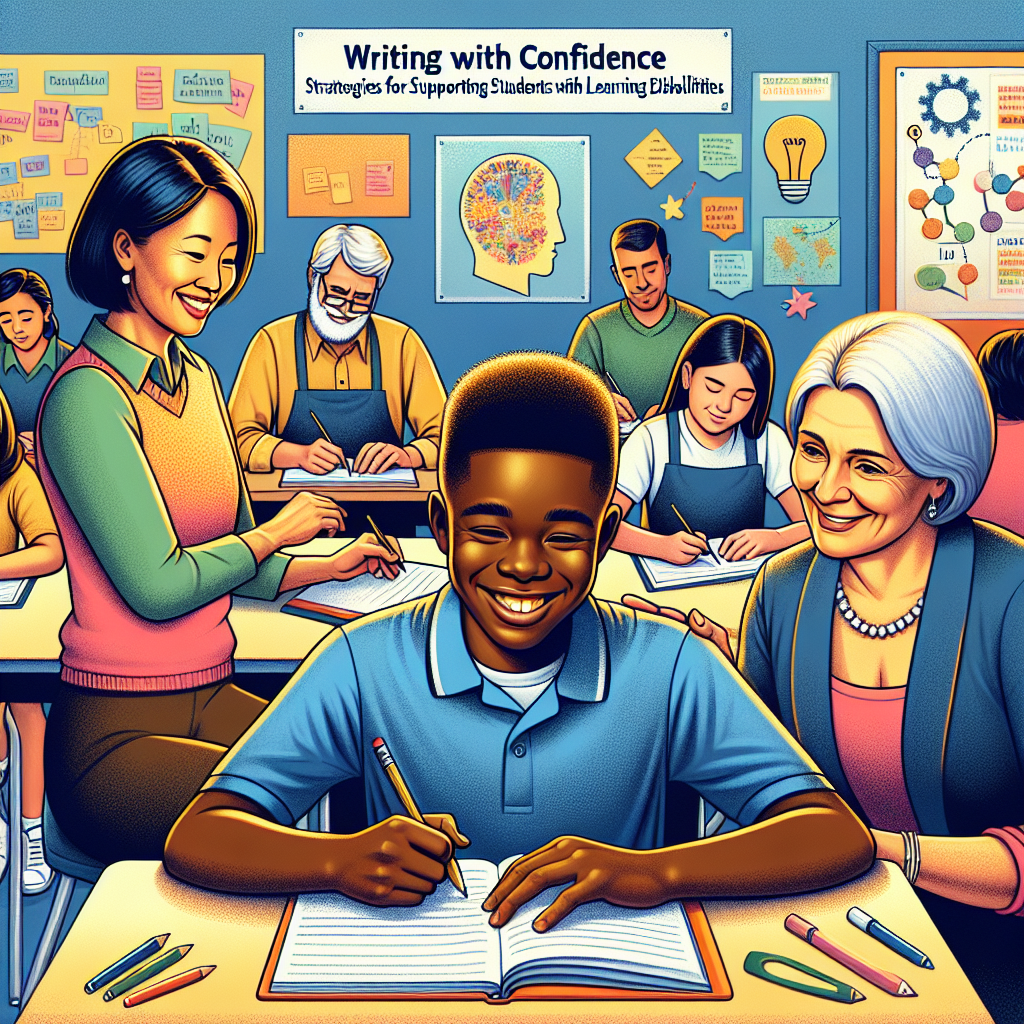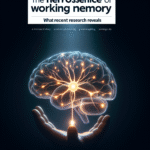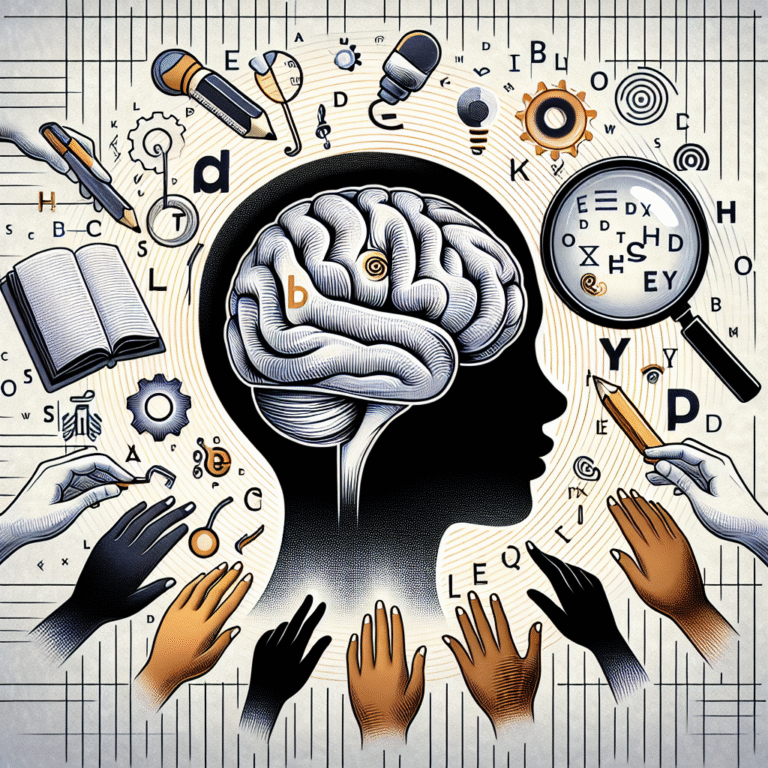
Writing with Confidence: Proven Strategies for Supporting Students with Learning Disabilities
Introduction
Imagine a classroom where every student feels empowered to express their thoughts, ideas, and creativity without the barriers often imposed by learning disabilities. Writing, a vital expressive tool, can be particularly daunting for these students. However, with the right strategies, we can foster an environment that encourages writing with confidence: strategies for supporting students with learning disabilities can transform their educational experience and outcomes.
In this comprehensive guide, we will explore effective techniques, actionable insights, and real-world applications designed to help both educators and students thrive in the realm of writing.
Understanding Learning Disabilities in Writing
Before diving into actionable strategies, it’s crucial to understand what learning disabilities are, particularly as they relate to writing. Learning disabilities are neurological disorders that affect the way individuals process information. This can manifest in various ways, particularly in reading and writing, often leading to challenges such as:
- Dyslexia: Difficulty in reading due to issues with phonological processing.
- Dysgraphia: Difficulty in writing, which may include issues with spelling, handwriting, and organizing ideas.
- Dyscalculia: Although primarily related to math, it can sometimes affect the organization of written work and understanding of informational texts.
The Importance of Supporting Students
Writing with confidence: strategies for supporting students with learning disabilities are critical. They not only enhance academic performance but also contribute to self-esteem and personal expression. When students feel supported, they are more likely to take risks in their writing, leading to growth in their skills and confidence.
Strategies for Supporting Students with Learning Disabilities
Let’s delve into practical strategies that can help students write with confidence. Each technique is designed to address the unique challenges faced by students with learning disabilities.
1. Use of Multisensory Approaches
Case Study: The Power of Multisensory Learning
A fourth-grade teacher, Mrs. Johnson, implemented a multisensory teaching method in her classroom. She combined visual aids, auditory cues, and hands-on activities to help students grasp the writing process. One child, Alex, who struggled with dysgraphia, flourished through this approach. By incorporating manipulatives like letter blocks, Alex could visualize and physically engage with words, dramatically improving his writing skills.
Relevance
Multisensory learning taps into various senses to enhance retention and understanding, proving especially beneficial for students with learning disabilities.
2. Graphic Organizers
Graphic organizers are visual tools that help students structure their thoughts. They can be an effective strategy for students who struggle with organizing ideas on paper.
Example Table: Types of Graphic Organizers
| Type | Purpose | Best For |
|---|---|---|
| Mind Maps | Brainstorming ideas and organizing them visually | Prewriting stage |
| Story Maps | Structuring narratives with elements like character, setting, etc. | Creative writing |
| Venn Diagrams | Comparing and contrasting ideas or concepts | Analytical writing |
| Word Webs | Expanding vocabulary and connections | Vocabulary development |
Case Study: Organizing Ideas
In a middle school, teachers observed that students using graphic organizers had clearer, more structured essays. For instance, Ella, a student with dyslexia, used a story map to outline her narrative. The result was a more coherent story, showcasing her creativity without the typical confusion associated with structuring her thoughts.
Relevance
Graphic organizers facilitate organization in writing, allowing students to focus on content rather than becoming overwhelmed by structure.
3. Provide Explicit Instructions and Modeling
Directly teaching writing strategies can demystify the writing process. Breaking down the components of writing into clear, manageable steps allows students to grasp each part individually.
Example Steps for Writing an Essay
- Understanding the prompt: Discuss what the question is asking.
- Researching: Teach students how to gather information.
- Outlining: Use a graphic organizer to arrange ideas.
- Drafting: Start writing with an emphasis on getting ideas down quickly.
- Revising: Encourage peer review sessions for constructive feedback.
Case Study: Effective Modeling
Mr. Smith, a high school English teacher, incorporated modeling into his writing curriculum. He used his own writing experiences to illustrate the importance of each step in the writing process. Students like Sam, who had a learning disability, reported feeling less intimidated and more prepared as they knew what to expect and what was required at each stage.
Relevance
Modeling provides students with a concrete understanding of writing processes, enabling them to imitate successful strategies.
4. Technology Integration
The use of technology can significantly enhance writing skills among students with learning disabilities. Tools like speech-to-text, spell check, and text-to-speech assist in reducing barriers related to writing.
Case Study: Embracing Technology
At a progressive school, a group of students used computer-assisted writing tools that provided speech-to-text functionality. Sam, struggling with dyspraxia, found that he could articulate his thoughts more freely and effectively. The results showed a significant improvement in both his writing pace and quality.
Relevance
Technology can bridge gaps for students, making writing more accessible and enjoyable.
5. Encourage Regular Feedback
Creating a culture of constructive feedback fosters growth and confidence in student writing. Teachers should provide both verbal and written feedback that encourages improvement without discouragement.
Example: Feedback Framework
- Praise: Highlight what the student did well.
- Critique: Offer insights on areas for improvement.
- Actionable Suggestions: Provide concrete steps the student can take to enhance their work.
Case Study: Feedback in Action
Ms. Taylor’s approach to feedback involved one-on-one sessions with her students, particularly focusing on those with learning disabilities. With tailored feedback, students like Mia felt less anxious about their writing and more willing to share their work in class. Over time, Mia not only improved her writing but also began to express herself more confidently in discussions.
Relevance
Regular feedback is crucial for growth, encouraging students to reflect on their work and make adjustments confidently.
Conclusion
Writing with confidence: strategies for supporting students with learning disabilities are essential for fostering an inclusive education environment. By understanding learning disabilities and implementing effective strategies—such as multisensory approaches, graphic organizers, explicit instruction, technology integration, and regular feedback—educators can empower students to express themselves through writing.
These strategies not only enhance academic performance but also build self-esteem and confidence, paving the way for future success.
Call to Action
As educators, parents, and peers, let us commit to creating supportive environments where every student can write with confidence. By employing these strategies, we can collectively change the narrative for students with learning disabilities, helping them realize their full potential.
FAQs
1. What are the most common learning disabilities that affect writing?
Common learning disabilities that impact writing include dyslexia, dysgraphia, and language processing disorders. Each presents unique challenges, affecting how students read, write, and organize thoughts.
2. How can I assess a student’s writing needs?
Assessing a student’s writing needs involves observing their writing struggles, conducting assessments (formal or informal), and having discussions to understand their specific obstacles and strengths.
3. Are there specific tools that can assist students with learning disabilities in writing?
Yes, tools such as speech-to-text software, graphic organizer apps, word prediction programs, and even simple spell-check features can be incredibly beneficial.
4. How can I create a more inclusive writing environment?
Incorporating a variety of teaching methods, providing flexible writing tasks, using diverse materials, and encouraging peer collaboration are all effective ways to create an inclusive writing environment.
5. What role does self-esteem play in writing for students with learning disabilities?
Self-esteem significantly impacts a student’s willingness to write and take risks in their writing. Positive reinforcement, constructive feedback, and a supportive learning environment can help build their confidence.
By tapping into these insights and techniques, we pave the way for students with learning disabilities to write confidently and powerfully, fully fulfilling their potential both inside and outside the classroom. Let’s support them on this transformative journey!
















